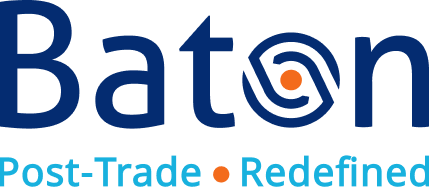By using the best available collateral to cover their margin with a central counterparty (CCP), Clearing Members can better manage liquidity, enhance the use of HQLA and monetize the high grade assets that are maintained in the custody accounts. In order to identify optimal collateral, Clearing Members need accurate, real-time information from multiple data sources.
Before deciding on the optimal collateral assets to deliver to a CCP, clearing firms need a full and accurate view of the full inventory of their collateral – that’s to say, initial margin, variation margin, cash balances, and non-cash collateral balances.
Then, to ensure that the optimal collateral is placed with a CCP, Clearing Members need to know the eligibility criteria at each relevant CCP. This information is published by CCPs in a number of different ways, such as Excel spreadsheets, CSV files and PDFs. For this data to be efficiently utilized, it needs to be extracted and normalized. Firms can then compare criteria such as haircuts, collateral usage fees and interest rates.
Only when all of this information has been gathered can meaningful decisions be made.
What firms should consider for Collateral Optimization
Once a Clearing Member has access to information about collateral conditions (rules), the firm can start looking at where and how collateral (assets) can best be placed in order to get the lowest set of haircuts and taking into consideration cross-currency haircuts and collateral usage fees.
Collateral optimization should generally result in the nominal value of the collateral placed to CCPs being as low as possible. If firms don’t correctly optimize, they will have a much larger nominal of collateral placed at CCPs than is necessary, reducing liquidity in their custodian accounts.
But, in addition to controlling the nominal value of the collateral, it’s also important to consider the composition of what is being posted. Placing the lowest-quality eligible collateral with a CCP allows the higher-quality assets to be unencumbered, which can be beneficial from a financial ratio perspective, including key ratios such as LCR and NSFR.
This process helps the firm to manage and use its liquidity. In most circumstances – and certainly in current market conditions – it’s better to place non-cash collateral at a CCP than to place cash. By ensuring that all margin requirements are covered by non-cash collateral, a Clearing Member can hold on to more cash in its accounts, reducing its liquidity strain.
However, it should be mentioned that optimizing collateral at a CCP isn’t always simply a case of choosing the CCP which offers the lowest haircut. A Clearing Members strategy will depend on its overall usage of its portfolio of collateral, so ‘cheapest to deliver’ is not the best overall solution for every single firm.
“Collateral optimization should generally result in the nominal value of the collateral placed to CCPs being as low as possible”
Collateral Optimization: Real-time information is key
The most efficient way to optimize collateral is by having as much information as possible coupled with the latest information possible. The different forms of data received need to be controlled and normalized. This enables the Clearing Member’s treasurer or margin team to manage the eligibility schedules at the CCPs and determine how and where to move collateral.
Since collateral optimization decisions need to be based on the cheapest way for a firm to deliver collateral overall – not just to one CCP but in order to cover margin requirements at all of the CCPs – access to just one CCP’s collateral schedule is of limited use. Collateral schedules for all of the CCPs need to be available at the same time for full Collateral optimization to be achieved.
Once a Clearing Member has this information, it might find that it needs to vary the collateral at a CCP – a collateral allocation that was appropriate at the time an initial decision was made may become suboptimal over time. This can be difficult to identify manually.
Baton Systems’ Core-Collateral™ solution allows Clearing Members to track the location of their collateral in real-time and enable assets to be delivered or recalled automatically from a single point of entry for all CCPs. This ensures that all available cash and non-cash collateral can be used optimally.
Core-Collateral connects Clearing Members directly to multiple CCPs via a single, consolidated interface, enabling them to identify and action the right collateral moves quickly and efficiently, reducing the operational burden that usually exists for moving collateral.
The solution also offers users a real-time, detailed view of assets available for use, aggregated across multiple data sources including custodians and nostro accounts.
“Baton Systems’ Core-Collateral™ solution allows Clearing Members to track the location of their collateral in real-time and enable assets to be delivered or recalled automatically from a single point of entry for all CCPs”
The wider implications
Within a clearing firm, the responsibility of the margins team is to cover the initial margin at a CCP with collateral as quickly as possible. Meanwhile, a treasury team may be working to optimize and deliver collateral.
The actions of these teams have a wide effect on the firm and the excess it holds in its accounts. The firm’s liquidity stream might be reduced, or, if the firm has investment programmes related to that excess, then the profits returned on that excess will increase. In this case, optimizing the use of assets on a daily basis will ensure that the firm can maintain that excess in its accounts to get the best return on investments.
In short, by optimizing collateral usage with the help of real-time balances and a full schedule of the eligibility to CCPs, Clearing Members can ensure that they get the best return for their collateral and therefore give the best return to their clients.
“In this case, optimizing the use of assets on a daily basis will ensure that the firm can maintain that excess in its accounts to get the best return on investments”
I hope you found this blog useful in explaining how Baton Core-Collateral can support clearing firms in deciding how to choose optimal collateral for CCPs.

